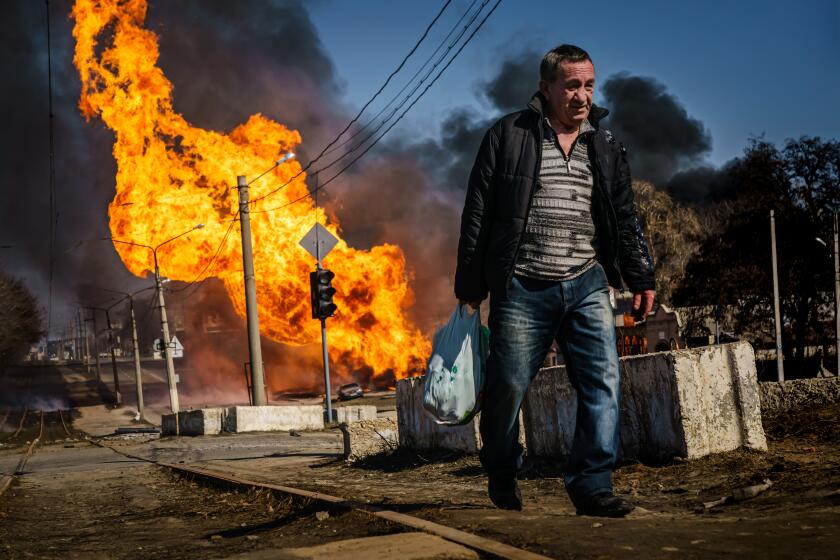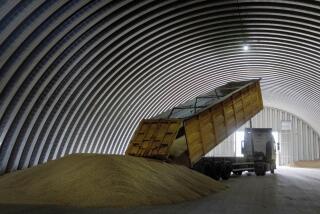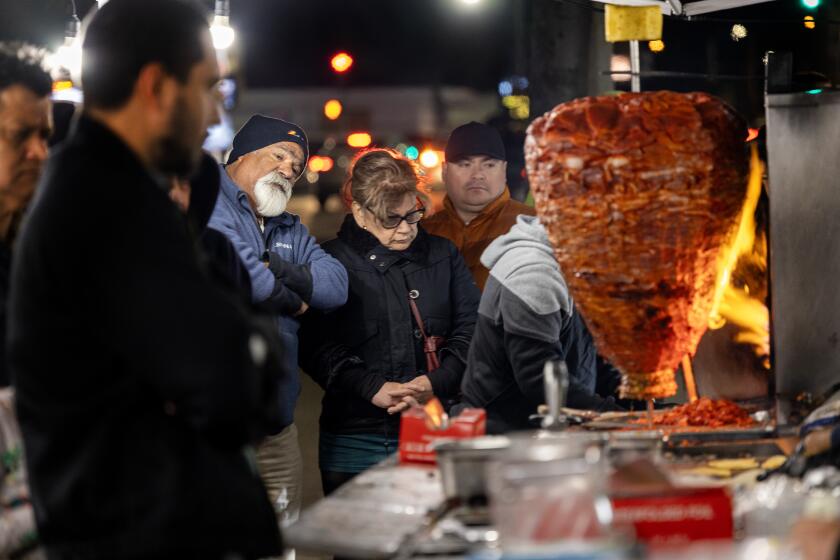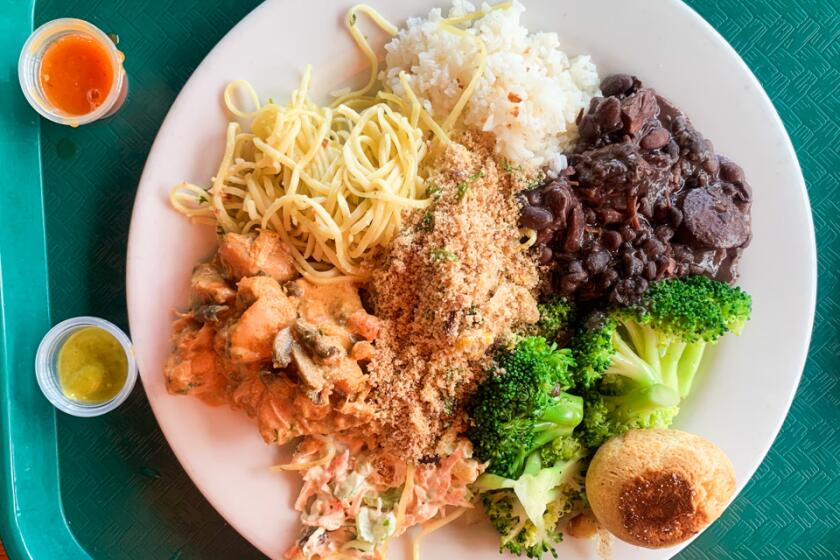Are certain dishes Ukrainian or Russian? It’s complicated

“In Ukraine, we were Jews. In America, we are Russians. But in reality, we are from Ukraine, when it was part of the U.S.S.R.”
This is how Marina Yusim describes her pluralistic identity. As someone who is the product of multiple cultures (her mother’s family was from Odessa, a historic Ukrainian city on the Black Sea, and her father from northern Russia), her notions of identity and loyalty fluctuate.
A week after Vladimir Putin launched a military invasion of Ukraine, Marina stood over the stove at her home in Studio City, stirring a pot of shredded carrots, beets and chopped bell pepper. In another pot, chunks of potato and cabbage bobbed together in boiling water.
Marina, 65, was making her mother’s recipe for borscht, a soup made from softened vegetables and meat when it’s available. It’s served with a dollop of sour cream and, on the side, a few slices of dense, dark bread rubbed with raw garlic. It’s a dish she ate often as a child growing up in Odessa.
“In the wintertime, my mother made it a lot because potato and cabbage were the only vegetables we had and those are the main ingredients,” she said.
Marina is the mother of my best friend, Jane. Last week, when my Instagram DMs were flooded with people asking where to find Ukrainian food in Los Angeles, she was my first call. Her answer? It’s complicated.
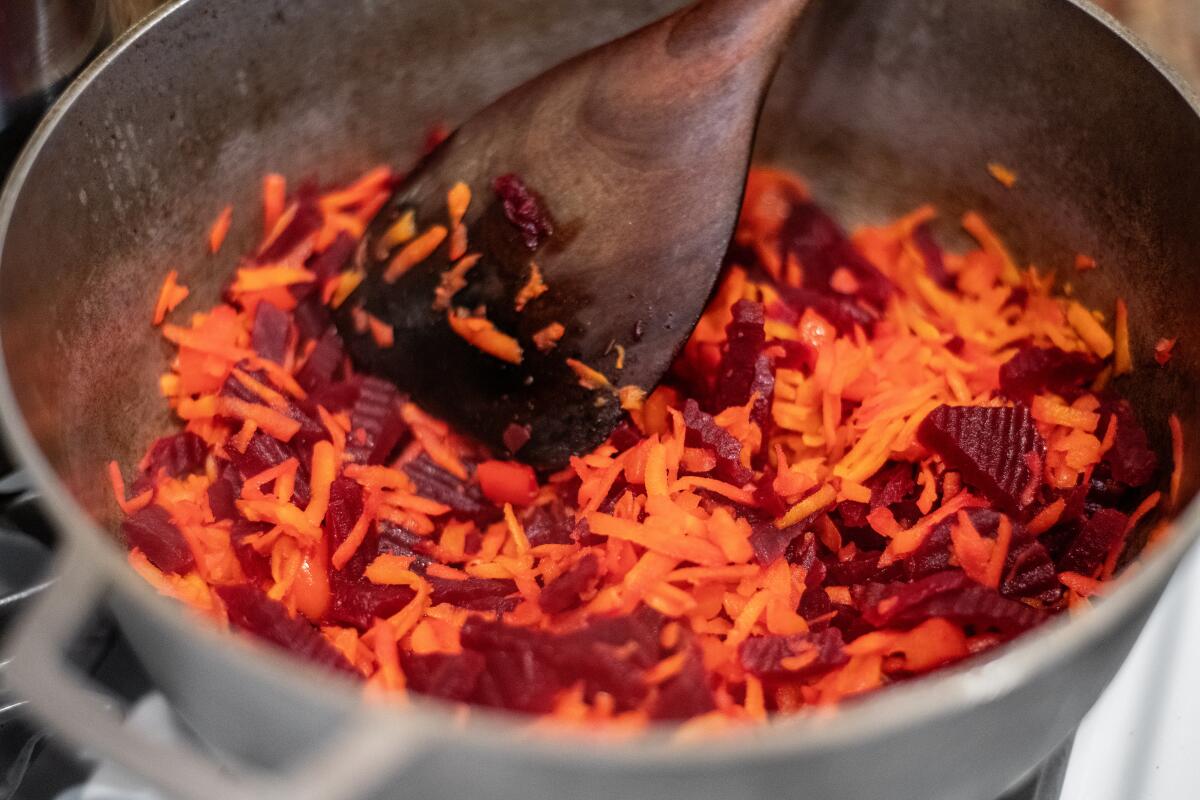
In much the same way that the identities of the people in the former Soviet Union are intertwined, the foods of the region overlap.
“What’s happening now is crazy,” Marina said. “Every Ukrainian family has either connections or relatives or friends among the Russian people and vice versa. The roots and connection between Russia and Ukraine [are] so deep and strong.”
The Times’ Marcus Yam, no stranger to war photography, gives a first-person account from Ukraine.
When she was growing up in Odessa, it was part of the Soviet Union. She remembers everyone in her city speaking Russian, except at school, where you had to learn to speak Ukrainian.
If you were Jewish you also had to deal with constant Soviet antisemitism, and Marina and her husband, Zimik, 67, applied to emigrate in 1977. Labeled as traitors, they reapplied to emigrate every six months for a decade before they were finally granted permission to leave.
The couple left with Marina’s parents, grandmother and two small children in 1988. The journey to the United States took five months with stops in Moscow, Vienna and Italy before landing in San Diego.
::
That interconnection of cultures plays out in the complexities of labeling certain foods as strictly Russian or Ukrainian. Both cultures make dishes such as borscht in myriad ways.
Marina’s borscht is a striking crimson red. The beets and carrots are cooked with tomato paste until they are almost melting with a slightly sour tang. She adds a pinch of sugar to finish the soup.
It’s a dish you can find at most Russian restaurants, though the soup is believed to have originated somewhere in what is now the nation of Ukraine some time before the 9th century, according to Alexander Lee, a fellow in the Center for the Study of the Renaissance at the University of Warwick in central England and author of the “Historian’s Cookbook” column for History Today magazine.
“Back then, the main ingredient was hogweed (cow-parsnips), which most of us today would think of as a weed,” Lee wrote in an email to The Times. “This was chopped up, put in water to ferment for a few days, and then mixed with broth, eggs, and cream or millet to make a soup. As you can imagine, it probably tasted pretty sharp!”
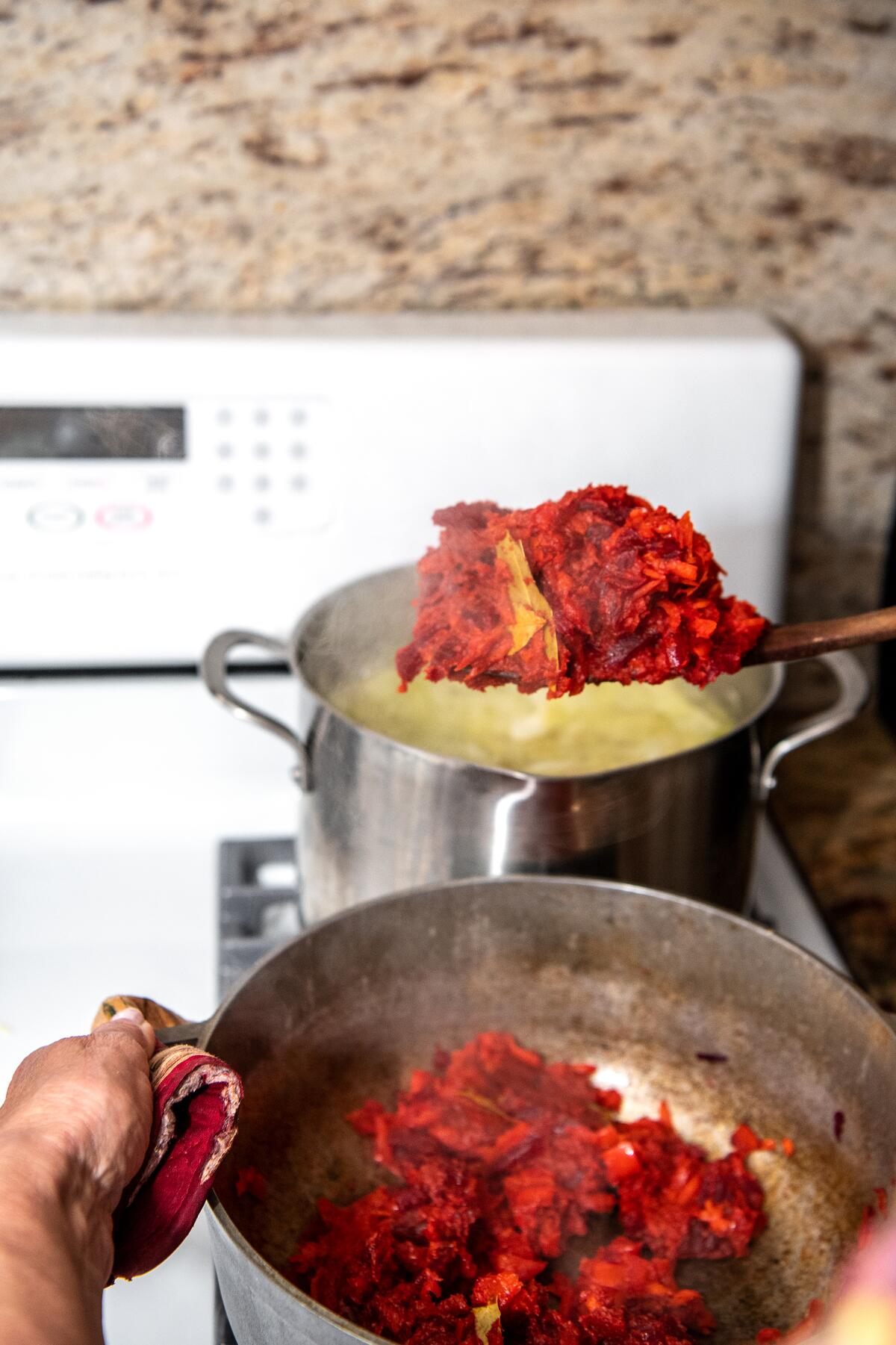
Multiple versions have been documented, including those made with kissel (a combination of fermented water with either oatmeal, barley flour or rye flour), lemon, sorrel, kvass (a fermented beverage made from rye bread), cabbage and sour cream. Lee said that red borscht, made with beets, was introduced toward the end of the 17th century, by people living in eastern central Ukraine. Industrial expansion and railways in Russia during the late 19th century helped spread its popularity all over the Russian empire.
“Because red borscht is both simple and nutritious, it came to be celebrated as the quintessential Soviet dish — so much so that it is even said to have been Leonid Brezhnev’s favorite dish,” Lee wrote. “Over the centuries, it has spread far beyond its original homeland, and has evolved into many different forms. Today, it’s eaten all over the world, from Los Angeles to Vladivostok. So while many people like to claim it as their own, borscht has a complex history — and can perhaps best be seen as a symbol of shared food cultures.”
Marina’s mother favored hot borscht with beets but also made a cold soup with beets and carrots, served with sour cream, chopped boiled egg and green onions.
“Considering the Ukrainians and Russians were together for more than 300 years, in parts of Russia or Georgia or elsewhere, they eat it [borscht] as well,” she said. “The recipe might be different and you can see how many recipes there are just in my family.”
Marina’s father, who started making borscht when her mother died, didn’t put tomato paste in his soup. Her neighbor in Studio City, who is also from Odessa, makes hers with V8 juice and ketchup.
“There are Russian restaurants in L.A. that serve borscht,” Marina said. “There are a lot of common foods.”
Pelmeni (dumplings) is a typical Russian food, she said, adding that vareniki, a typical Ukrainian dish, is basically a larger dumpling, usually filled with potato.
“It’s essentially the same dish, but each side has their own version of it,” she said.
Aspic, a gelatin dish made by boiling down animal fat, meat and bones, is called aspic in Ukraine but holodets in Russia.
There are even food terms and dishes specific to Odessa. “In my city, we call eggplant syniy, the Ukrainian word for blue,” she said. “In Russia and other parts of Ukraine, it’s called baklazhan.”
::
Shortly after the military invasion, my TikTok feed was flooded with store owners pulling bottles of Russian Standard vodka and Stolichnaya off the shelves and people emptying full bottles into the street. Users called for a boycott of all Russian vodka.
But the Yusims hope that boycotters will try to remember those connections between the Ukrainian and Russian peoples.
“I would not buy anything that could mean money to support the Russian troops or Putin,” Marina said. “But don’t boycott the people. Unfortunately, the people will suffer much more than anyone else.”
If you’d like to make Marina’s borscht, here’s a quick rundown of her recipe.
Bring two quarts of water to a boil. Add two peeled and chopped potatoes to the water. Then add a whole head of cabbage diced into thin strips. Add more water to the pot to cover the vegetables if needed. Boil the vegetables until soft.
In a separate pan, heat a couple of tablespoons of vegetable oil. Add two to three medium-sized beets, shredded, along with two shredded carrots and chopped bell pepper. Once softened, add a 6-ounce can of tomato paste and a couple of bay leaves. Stir and add the mixture to the pot with the potatoes and cabbage. Let the mixture boil together for a couple of minutes. Add chopped parsley and a pinch of sugar. Serve with sour cream and dark bread rubbed with fresh garlic.
Marina suggests letting the borscht sit overnight and reheating before enjoying the soup.
More to Read
Eat your way across L.A.
Get our weekly Tasting Notes newsletter for reviews, news and more.
You may occasionally receive promotional content from the Los Angeles Times.
